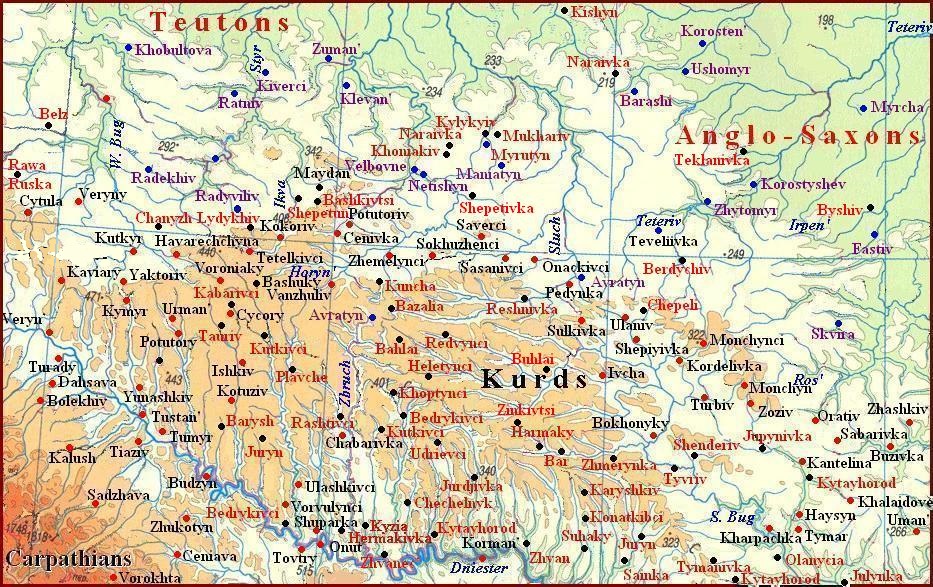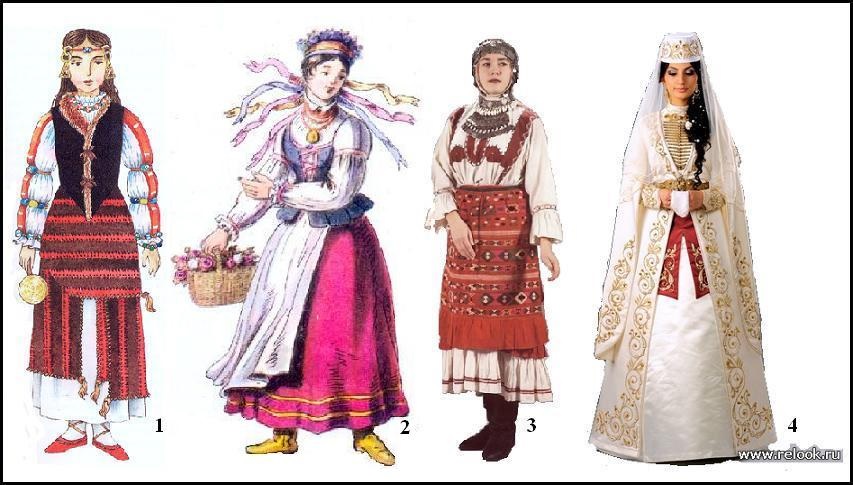Genesis of Scythian Culture
The question of the genesis of the Scythian culture is closely tied with the presence of Turkic tribes in Ukraine since Neolithic times (see Section The Türkic Tribes.)

Emine S. Özcan (ÖZCAN EMINE SONNUR, Dr. 2020) writes a lot and convincingly about the similarity, and even identity, of the Scythian and Turkic cultures, but such similarity may also indicate that the Scythians came to the North Black Sea from Asia. However, if the Scythians are considered an Iranian-speaking people, with which she categorically disagrees, then the ancestral homeland of the Indo-Europeans, who include the Iranians, should also be sought in Asia. In this case, the question of the ethnicity of the Scythian culture may be key in localizing the ancestral homeland of both the Turks and Indo-Europeans
Tracing this genesis, we will have in mind what B. Rybakov had already noted, that there is no dispute about the cultural continuity from the Fore-Scythian to the Scythian period in the Ukrainian Forest-steppe. He asserted that all Forest-steppe agricultural cultures came from the Fore-Scythian time (RYBAKOV B.A. 1979: 142). At the same time, it is important that the sites of the Early Scythian time are located in the Forest-Steppe, while in the steppes they have not yet been found by archaeologists. Finding none, they include sites of Novocherkassk group to early Scythian culture which is not correct (POLIN S.V. 1998).
Especially important for restoring the genesis of the Scythian culture is the discovery of the Early Scythian hillfort in Poland near the village of Chotyniec of the Subcarpathian Voivodeship (the gmina of Radymno). Polish archaeologists attribute it to the forest-steppe model of Scythian culture:
The amazing size of the hillfort in Chotyniec excludes its dating to the early Middle Ages and later. Thus, one should recall Eastern analogies. In light of the discovered historical material.., it can be argued that this object should be combined with the Scythian cultural circle. (CZOPEK SYLWESTER a.o. 2017: 293)
Taking into account these facts, we can conclude about the need for more careful consideration of the pre-Scythian culture of Ukraine and neighboring territories.
Ukrainian archaeologists distinguish such For-Scythian cultures in the Ukraine: (1) Cimmerian culture in the steppe, (2) Chornolis culture in the forest-steppe of the Right-side Ukraine, (3) the culture of Thracian Halstatt in Moldova and Middle Dniester land, (4) Vysotska culture in the West Ukraine, and (5) Luzhitska in the extreme western rand of the Ukraine (TERENOZHKIN A.I., Ed., 1971: 8). The last culture occupied only very little area and had not great influence on the cultural process in the Ukraine at that time. Cimmerian culture is represented only by some entombments in the steppe. Vysotska culture and culture of Thracian Halstatt are peripheral. Thus, we will pay more attention to Chornolis culture.
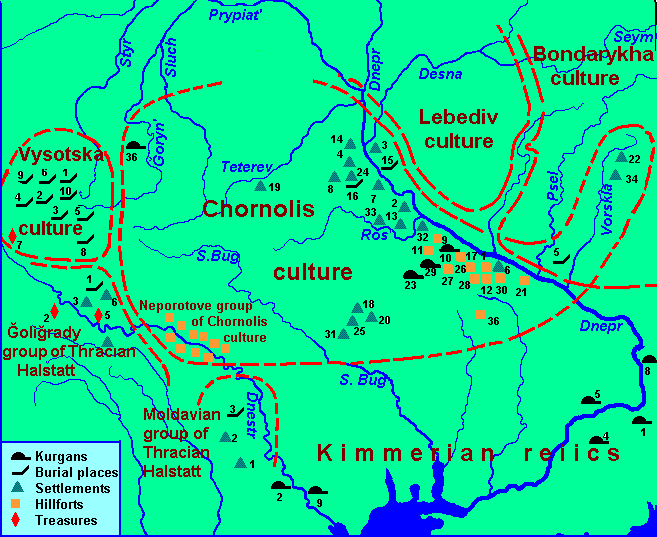
Map 7. Archaeological Cultures of For-Scythian Time in the Ukraine
І. Cimmerian sites: 1. Dnieproprudnyi. 4. Mala Tsymbalka. 5. Nikopol. 8. Parkany. 9. Petrovo-Svystunovo.
ІІ. Vysotska culture: 1. Vysotske. 2. Honcharivka (Belzets). 3. Zolochiv. 4. Krasne. 5. Loshniv. 6. Luhove (Chekhy). 7. Nedilivske. 8. Ternopil. 9. Ulvovek. 10. Yaseniv.
ІІІ. Holihrady group: 1. Holihrady. 2. Hrushky. 3. Ivane-Zolote. 4. Mahala. 5. Mykhalkiv. 6. Novosilka Kostiukova.
ІV. Moldovian group: 1. Chișinău. 2. Lukashivka. 3. Şoldăneşti.
V. Chornolis culture: 1. Adamivna. 2. Bobrytsia. 3. Bortnychi. 4. Boyarka. 5. Butenky. 6. Velyka Andrusivka. 7. Veremia. 8. Voroshiliv. 9. Holoviatyno. 10. HUlay-horod. 11. Zalyvky. 12. Kalantayiv. 13. Kaniv (Sytnyky). 14. Kiev. 15. Kyilov. 16. Kolomyishchyna. 17. Lubentsi. 18. Mankivka. 19. Muklashi. 20. Molodetske. 21. Moskovska hora. 22. Nytsakha. 23. Nosachiv. 24. Pidhirtsi. 26. Poludnivka. 27. Sokyrne. 28. Subotiv. 29. Tenetynka. 30. Tiasmyna. 31. Uman'. 32. Khreshchatyk. 33. Khokhitva. 34. Khukhra. 35. Chornyi lis. 36. Yanytske.
Chornolis culture has some specific features which connect it with the Vysotska culture (see. KRUSHELNYTSKA L.I. 1998). Sufficient proofs for these relations can be found in following.
It is believed that the Vysotsky culture, which existed from the Bronze Age to the Early Iron Age, is influenced by Thracian Hallstatt culture (Hava-Holihrady), but M. Peleschishin, the researcher of this culture refutes this view, asserting that Vysotsky culture is not a "mixed, hybrid phenomenon emerging at the intersection of several cultures of different origins", but on the contrary, it has local roots:
It was a significant ethnocultural value of local origin, which selectively borrowed certain elements of the culture of its neighbors (PELESHCHYSHYN MYKOLA, 1998, 30)
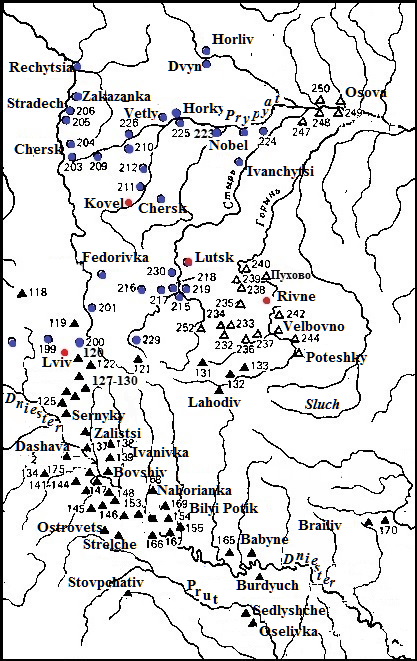
Spread of sites of Trzciniec and Komariv cultures
A fragment of the map of Archaeology site.
On the map, the sites of Trzciniec culture (its creators were the Teutons) are indicated by blue dots. The sites of the Komariv culture are marked with black triangles. The contact area between the Trzciniec and Sosnitsa cultures (created by the Anglo-Saxons) is indicated by light triangles.
In this case, Vysotska culture was developed based on the Komariv group, the Trzciniec range of cultures, of which the creators were the proto-chuvashes. Some of them stayed in the Upper Dniester area and then moved from the steppes of Ukraine to Central Europe in the middle of the 3rd millennium B.C. (see section "Turks as carriers of the Corded Ware culture in Central -Eastern Europe.”. The stay of Proto-Chuvashes in these areas are confirmed by preserved now onomastics (mainly by place names, but partly by anthroponymy) explained well with the help of the Chuvash language. Hypothetical territory of Bulgarish settlement would have to be the area south of the ancient Teutons, that is, in the catchment of the upper Dniester, Western Bug, Vereschytsia, Zolota Lypa, Strypa Rivers what is affirmed by a large list of Chuvash-Germanic Language Connections
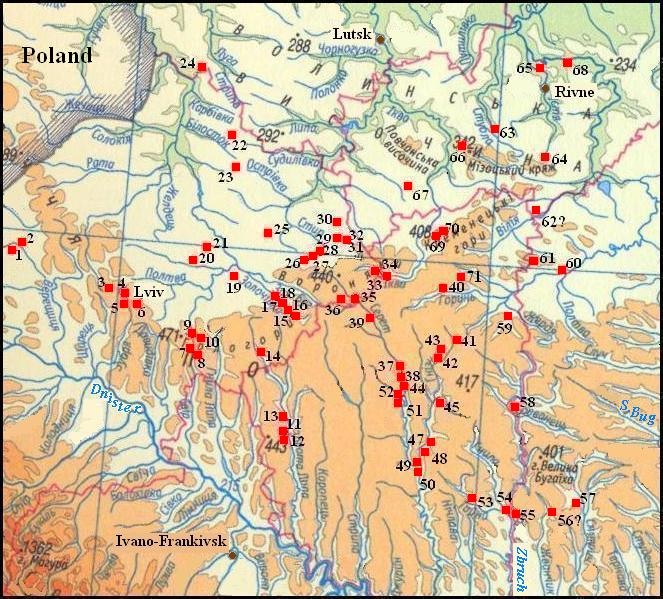
Left: The map of sites of Vysotska culture
The map was made on the basis of Bandrivski's data who used also information of Ya. Pasternak, L. Krushelnytska, Cinkalowski (BANDRIVSKYI MYKOLA, 1998, Fig. 3, p. 36). Location of several sites on the Bandrivski's map does not correspond an official map, but these errors do not distort the general picture
Such sites were marked by numbers:
1. Ternivytsia. 2. Shklo. 3. Vorotsiv. 4. Lviv. 5. Cherepyn. 6. Zvenyhorod. 7. Svirzh. 8. Nedilyska. 9. Lahodiv. 10. Lypivtsi. 11. Kotiv. 12 Bozhykiv. 13. Berezhaby. 14. Vitsyn'. 15. Zolochiv. 16. Khilchytsi. 17. Pochapy. 18. Bezdets (Honcharivka). 19. Krasne. 20. Neslukhiv. 21. Rypniv. 22. Byshiv. 23. Stanyn. 24. Romanivka. 25. Perevolochna. 26. Kuty. 27. Chekhy (Luhove). 28. Vysotske. 29. Smilne. 30. Koniushkiv. 31. Brody. 32. Stari Brody. 33. Krutniv. 34. Popivtsi. 35. Markopil. 36. Lukovets. 37. Hlubochok Velyky. 38. Bila. 39. Zaliztsi. 40. Lozy. 41. Musorivtsi. 42. Zbarazh. 43. Kolodno. 44. Ternopil. 45. Birky Velyki. 46. Myshkovychi. 47. Skomorokhy. 48. Loniv. 49. Terebovla. 50. Zelenche. 51. Ostriv. 52. Petrykiv. 53. Uvysla. 54. Rakiv Kut. 55. Holenyshchiv. 56. ZAvadyntsi (?). 57. Kreminna. 58. Volochysl. 59. Ivankivtsi. 60 Bilohirka. 61. Syvky. 62. Sokyryntsi(?). 63. Zhorniv. 64. Derman'. 65. Horodok. 66 Myrohoshcha. 67. Dubyny. 68. Zaborol. 69. Kulykiv. 70 Kremenets. 71. Viknyny Velyki.
Chornolis (Chernoles in Russian) culture got its name after the locality of Chornyi Lis (Black forest) which is near the village Boğdanivka at the upper course of the Inğulets River, the right tributary of the Low Dnieper, an ancient site, a fortified settlement (hillfort). It was first encountered as a new unknown culture in the year 1949. Initially, many of the Chornolis culture sites were found along the right bank of the Dnieper in the basins of the Tiasmyn and Ros’ Rivers. During the 60-70 years of the last century, the question of the Carpathian population during the Scythian time was the least archaeologically studied (ARTAMONOV M.I., 1974: 129). Later, however, more than 60 settlements were surveyed in the Middle Dniester (KRUSHELNYTS'KA L.I., 1998: 3). the Chornolis culture generally occupies a large portion of Right-Bank Ukraine.
Simultaneously with the Proto-Chuvashes the Kurds also stayed on Right-Bank Ukraine, which, among other things, is confirmed by the place names of Kurdish origin, the main cluster of which is generally east of the Proto-Chuvash ones, but here and there the alleged Kurdish and Proto-Chvash settlements are mixed (see the Section "Cimmerians").
The strip of the Chornolis sites on the Left Bank Ukraine along the Vorskla and Psel Rivers is reflected fairly well in place names. The Chornolis Proto-Chuvashes, moving from their original habitat, reached the Dnieper and crossed to its left bank. Here they entered the territory of the Mordva that had advanced here earlier and later had to move to the north-east under the pressure of new aliens. Distribution of the Proto-Chuvash place names on a large territory from Kyiv to Kursk and Rostov-on-Don responds to the later settlement of the Scythians.
There are shown on the map below main clusters of Proto-Chuvash and Kurdish place names, as well as part of names of Germanic origin in the southern parts of Anglo-Saxons and Teutons areas.
Place names of Proto-Chuvash origin are signed by red color, Kurdish -black, Teutonic and Anglo-Saxonic – blue.
The largest number of Proto-Chuvash place names were found in the Lviv Region and further east to the Hnyla Lypa River. Still, one of the clusters is located on the territory of the Cherepyn-Lahodiv group of sites, L. Krushelnitska relates to early Scythian and M. Bandrivsky to Vysotsky culture. Among all the place names of Proto-Chuvash origin, a clear chain of settlements is allocated at a distance of 10-20 km from each other. It stretches from the town of Sokal in the north of Lviv Region, above the town of Radekhiv to the town of Radivilov, then turns east and runs south of the towns of Kremenets, Shumsk, and Izyaslav to Lyubar then turns to the south-east, passes above the town of Chmelnik through the village of Kalinivka, and there, not a chain but a real band of names goes to the direction of the Dnieper. There are north of this chain the place names of Proto-Chuvash origin too, but they are scattered haphazardly. The band of Kurdish settlements that stretches along the Dniester River eastward may reflect the fact that the Kurds were moved simultaneously with the Proto-Chuvashes to the Dnieper River, forcing the remnants of the Thracians to the right bank of the Dniester, and then turned to the Pontic steppe.
As it is evident by the spread of the Proto-Chuvash and Kurdish place names, the Proto-Chuvashes and Kurds were living nearby, and that was reflected in numerous lexical matches between the Chuvash and Kurdish languages (see the Section "Cimmerians"). The Middle Dniester option of Chornolis culture belongs to the Kurds, as a dense group of Kurdish toponymy is concentrated namely in this place.
Many archaeologists agree that the Chornolis culture evolved based on the Biloğrudiv culture which existed in the 12th-11th century B.C. Supposedly it was created partly by the Thracians staying in the area near the city of Uman while moving to the Balkans (See the section "The migration of the Indo-European Peoples at the End of the 2nd and at the Beginning of the 1st Mill BC"). The Biloğrudiv people left peacefully their settlements, having gone across the Dniester and farther, obviously forced out by Cimmerian raids from the steppe and from the pressure of the Kurds from the north-west. Their places were taken by the Proto-Chuvashes, while the Kurds continued their movement along the Dniester into the steppes, where they met their kinsmen. Larissa Krushelnytska gave several data about the moving of the Vysotska culture carriers eastward and southeast along the Dniester River (KRUSHELNYTS'KA L.I., 1998: 185-200). It should be noted that the Biloğrudiv settlements were not fortified but newcomers began to build hillforts to insure against the nomads. Usually, the hillforts were placed on the capes of high river banks, formed by two converging ravines. The central fortification, built with logs and surrounded by a ditch, was not large (40-100 m in diameter) and therefore could not place all housing of settlers. The field side of the settlement was protected by three lines of bulwarks, among which were located in residential areas, outbuildings, etc. However, these fortifications were not sufficiently reliable. Describing the settlements of Chornolis dwellers, A. Terenozhkin pointed:
Most Chornolis hillforts existed not long, the settlement of Tiasmyn was destroyed by fire. Many homes on the lower layer of the Subbotiv hillfort ceased to exist also by fire (TERENOZHKIN A.I. 1961: 40).
The peaceful coexistence between the Proto-Chuvashes and the Kurds at the previous time was broken after the last contact with other Iranians in the steppes of Right-Bank Ukraine. Retreating from the combined forces of the Cimmerians, the Chornolis people moved across the Dniester and partly crossed the Dnieper to the Vorskla River. Ukrainian archaeologists believe that the settlement of the Vorskla basin by the Chernoles tribes began probably at an early level of the Chernoles culture at the end of the Bronze Age (Arkheologiya Ukrainskoy SSR. 1986: 40). Archaeologists distinguish Zhabotin phase of development of Chornolis culture at its late stage. "The standard site of the early Iron Age" Zhabotin settlement, located in the Kamenka district of Cherkasy Region, "is securely dated to the 8th century B.C. (DARAGAN A.I. 2005, 16).
Due to the regular annual research of Lviv archaeologists under L. Krushelnitska’s leadership, numerous settlements and burial grounds of the Late Bronze and the Early Iron time were discovered on the Middle and Upper Dniester land and in the Fore-Carpathians. Among them there were such remains that show the gradual transition from the Chornolis to the Scythian culture, e.g. the complex in the village of Neporotovo on the river Dniester in Chernovtsy Region:
Four settlements (Neporotovo I, II, III, and IV), numerous separate relics, and the rest of a burial ground were excavated on an area of 6000 sq. m. The findings and also the layers of the objects, which overlap each other, have enabled the allocation of three chronological horizons: the upper –the Early-Scythian; the transitive – from the For-Scythian to the Scythian; and the lower which is synchronized with the Chornolis culture (KRUSHELNYTS'KA L. 1993-1: 7).
The sites of the Early-Scythian time are revealed also in the Lviv Region – near the village of Krushelnytsia in the Skole district and near the town of Dobromil on the river San (KRUSHELNYTS'KA L., 1993-2: 226). However, the Scythian influences reach considerably further:
The presence of artifacts of Scythian type in the Central Europe (the authentic and made on Scythian samples) has allowed researchers to draw a conclusion that this territory was under influence of Scythian culture. The largest concentration of finds of the Scythian type is observed in Transylvania and Hungary (POPOVICH I., 1993: 250-251).
It has been suggested that the Scythians appeared in eastern Hungary in the late 6th cent BC and ruled there for about three centuries before the arrival of the Celts (SHUSHARIN V.P., Ed., 1971: 25). If the Scythians were an Iranian-speaking people, as is commonly believed, they should have left traces of their stay in Hungary in toponymy. However, such traces were not found, on the contrary, many placenames of Hungary can have Proto-Chuvash origin, which is quite understandable by the presence of Proto-Chuvashes in Western Ukraine. Many of them can be found in the section "Turkic Place Names in Central and North Europe". Some examples of Proto-Chuvash place names in Hungary:
The village of (v.) Abasár in Heves County – Chuv upa “a bear”, shur "swamp";
c. Dunakeszi in Pest County – the first part of the word is the Hungarian name of the Danube, the second part corresponds to the Сhuv kasă "street, village", a very common formative for Chuvash place names;
v. Inke in Somogy County – Chuv inke “daughter–in-law”;
r. Kálló , the right tribute (rt) of the Berettyó, rt of the Sebes-Körös, rt of the Körös, the left tribute (lt) of the Tisza, lt of the Danube – Chuv khulla “slow”;
r. Kerka, lt of the Mura, lt of the Drava, rt of the Danube – Chuv kĕrke “a trout’;
v. Onga in Borsod-Abaúj-Zemplén County to the east of Miskolc – Chuv unkă “a ring”;
v. Tarpa in Szabolcz-Szatmár-Bereg County – Chuv tărpa “a chimney”;
t. Tura in Pest County – Chuv tără 1. “a mountain”, 2. “clear”;
v. Ják in Vas County – Chuv yăk “misfortune”;
r. Laskó, rt of the Tisza, lt of the Danube – Chuv lashka “to plod”;
t. Zahony in Szabolcz-Szatmár-Bereg County – Chuv çăkhan’ “a raven”;
r. Zala, flows in Lake Balaton – Chuv çula “to lick”.
The spread of place names shows that the Scythians occupied almost the entire territory of Hungary but later were mixed with the newcomers. Proto-Chuvash place names are practically absent in Slovakia, except for a narrow strip of steppe in the south, where a few place names may have Proto-Chuvasah origin. There are few Proto-Chuvah place names in Poland. They are concentrated mainly in Eastern Poland, where in 2016 a Scythian hillfort was discovered near the village of Chotyniec. It is dated by radiocarbon analysis of the 8th century BC. However, the fact that typical Scythian bronze arrowheads were found on many sites of Lusatian settlements (TRET'YAKOV P.N., 1952: 81), may indicate Scythian raids far up to the territory of modern-day Germany. The concentration of Scythian finds in Transylvania does not indicate a massive penetration of Scythians hither, since the Proto-Chuvash place names are rare here. Scattered on Romanian territory, they can be from the middle of the first millennium of our era.
Ukrainian archaeologists generally agree with the cultural continuity of Pre-Scythian to Scythian time as observed in the Ukrainian Forest-steppe primarily in the area of the spread of the Chornolis culture and sites of type that replaced it (Arkheologiya Ukrainskoy SSR. Tom 2. Pervobytnaya arkheologiya. 1986: 50). Even supporters of Central Asian origin of the Scythian culture do not in general contradict the continuity of the Scythian culture in the right-bank Forest-steppe from local ones:
There is in the Forest-steppe to the west of the Dnieper River, a high concentration of the sites of the pastoral-agricultural population being of the Scythian culture, whose roots go deep into the local culture of the Bronze Age (IL'INSKAYA V.A., TERENOZHKIN A.I. 1983: 11).
An important is the following observation:
The Scythian-Siberian ritual of burial in kurgans was spread in the Right-Bank Forest-steppe… This ritual peculiar to the early Scythians was kept with firmness in the Right-bank Forest-steppe until the end of the Scythian period (Ibid: 365).

The skeleton of a person buried in a grave field of Chornolis culture.
Neporotiv ІІ. Excavation І. Pit 10, burial #2 (KRUSHELNYTSKA L.I. 1998: Photo 6.)
However this rite in a crouched position on the side was not "spread", as written cited authors above, but it was long peculiar at Turks at the times of Pit culture, whose descendants were the Proto-Chuvashes.
Taking into account the chronological framework of the evolution of the Chornolis to the Early-Scythian culture and available place names, we can assume that the core of the Scythian culture started to emerge on the banks of the left tributaries of the Dniester such as Vereschitsa, Ğnyla Lypa, Zolota Lypa, Strypa, Seret Rivers. The famous Scythian gold was mined in the basin of these rivers, since numerous toponymy, which can indicate the former rich deposits of this metal, are concentrated here. Incidentally, several treasures were found on the same territory, the most famous of which are two treasures of gold objects from the village of Mikhalkiv, Ternopil region referred to in the chapter “Cimmerians”.
The impact of the culture of Thracian Hallstatt (especially Trans-Carpathian) on the early Scythian culture, which were spoken and continue to be spoken by experts (ARTAMONOV M.I., 1974: 93, ROMANCHUK ALEXEY. 2004: 383), is easier to explain just by its origin in the upper reaches of the Dniester River.
V. Ilyinski and A.Terenozhkin as supporters of Central Asian origin of Scythian culture, contradicted themselves when they said that the earliest relics of the Early-Iron Age on the Left-Bank Ukraine were settlements and burial-places of the second stage of the Chornolis culture. Their uprising was caused due to the migration of the population from the right bank of the Dnieper in the late 9th or the early 8th cent BC, and later the local variation of the Scythian culture was created on this basis. The rest of the territory of Left-Bank Forest-Steppe, according these scholars, was settled later, at the beginning of the first half of the 6th cent BC, and Scythian sites appeared here already in a fully formed shape after the come-back of the Scythians from the presumed raids to the Near East (IL'INSKAYA V.A., TERENOZHKIN A.I. 1983: 366)
The view that the Scythian culture in the territory of Western Ukraine was brought by aliens from somewhere in the steppes is prevailing among scientists. It is even supposed that there were possible penetration of these carriers of Scythian culture to the territory of present-day Hungary (POPOVYCH. I. 1993: 282). This idea looks strange, if you pay attention to the fact that the latest site of Scythian culture in the village of Lahodiv (near the city of Lviv) is dated back to the 5th century B.C., and a chronological gap follows until the 1st century B.C. when the period of Lipetsk culture begins (KRUSHELNYTSKA L. 1993-2, 238). Paying attention to this, L. Krushelnitska draws the such conclusion:
Thus, the chronological gap between the two cultures covers at least three centuries. But the question of the duration of cultures and groups of the Early-Scythian time is not clarified not only to the Fore-Carpathian region. The same situation may be seen on the countries of the entire Forest-steppe Ukraine, where no invasion of the Scythians happened but only their culture has occurred (Ibid).
It is unclear from this passage who were the bearers of the Scythian culture, but for us it is important that the Scythian culture of later times were not present on these space but only the Early-Scythian one, what is indirectly confirmed by another expert:
It is amazing that,.. emerged yet in the late 7th – the beginning of the 6th cent BC communication of the Greeks with Podolia had no development, while it have expanded and intensified with the Middle Dnieper country over time. This fact is likely connected with another one – with a relatively early termination of life on the Podolian settlements and shelter hillforts. Though the same settlements and the hillforts continued to exist until the disappearance of the Scythians from the Dnieper region” (ARTAMONOV M.I., 1974: 112).
In light of these facts it appears that the Scythian penetration in the Fore-Carpathians and further to the Transcarpathian began before the flowering of the Scythian culture in the Pontic, seems to be illogical.
Herodotus asserted that the Scythians arrived from Asia, forced the Cimmerians from the Black Sea and pursued them even to the Caucasus. The area of the Cimmerian culture extended beyond the right bank of the Dnieper to the Danube, so we can doubt that the Scythians, coming from the east, drove the Cimmerians to the Caucasus. If the Cimmerians retreated before the Scythians came in, they would have to run away somewhere across the Dnieper and the Danube to the Balkans, but did not break through them to Byelorechensk Pass in the Caucasus and farther. A similar doubt has been already advanced by M. Artamonov, estimating the choice of the resettlement way to Asia Minor along the eastern shore of the Black Sea as odd, because in addition to the usual difficulties, "it still led in the direction of the enemy, from which the Cimmerians departed" (Ibid: 16). With the logical retreat of the Cimmerians over the Danube, their raids into Western Asia were to occur exclusively through the Balkans. However, historical data indicate that the majority of the Cimmerians came out of the Caucasus mountain range and only some small part of them together with the Thracians arrived in Asia Minor from the Balkans (according to the testimony of Strabo). On the other hand, “the appearance of the Scythian sites in the Northern Caucasus was connected with the time of Fore-Asiatic campaigns, the beginning of which belongs to the 80-70 years of the 7th cent B.C. (MAKHORTYKH S.V., 1991: 11). The analysis of the funeral rites of the Scythian burial-places in the North Caucasus "reveals a genetic affinity with Fore-Scythian and Early-Scythian relics of the Black Sea forest and steppe zones" (Ibid., 112).
While considering the question of the spread of the Scythian culture from the Western Ukraine, it is useful to reflect on the thoughts and observations of the biggest experts in the Scythian culture, M. Artamonov. In particular, he wrote:
Noteworthy is the fact that there is a more abundant spread of Greek products in the environment of the nomadic Scythians dwelling not close to Olbia but in the remote forest-steppe zone of the modern-day Ukraine, settled by Scythian farmers. In connection to this, we should also note another fact, namely, that rich burial-places under kurgans, specially erected for them, appeared at these Scythians before the nomads (ARTAMONOV M.I., 1974: 83).
He explained these facts as if the Greeks had more profit trading with the rich farmers than with the poor nomads. But how does one explain that the richest Scythian burial kurgans were found just in the steppes, but not in the Forest-steppe. Nomadic economy has not changed but why nomads become suddenly rich. In fact, the ranchers were not poorer of the farmers, and perhaps were even richer than they. It is therefore logical to assume that the spread of the Scythians to the Pontic steppe occurred from the Forest-steppe of the Right-bank Ukraine. The same can be said about the Scythian settling the Dnieper left bank. M. Artamonov said rightly – first the Scythians master the basin of the Vorskla but "the Sula and the Seversky Donets rivers were inhabited by the Scythians later than the Vorskla… The settling of the Middle Don region by the Scythians belonged to the later period – the turn of the 6th-5th cent. BC” (Ibid: 92). While establishing these facts, it seems simply absurd that the Scythians, coming from the east passed along the Don and Pontic steppes and departed straight into the Forest-steppe of the Right-bank Ukraine, and after some time returned to the places that they could settle before.
Thus we conclude that the Chornolis culture was created by the Proto-Chuvashes on the Biloğrudiv basis and having two stages of development: the early (about 1050 – 900 years B.C.) and the late one (900 – 725 years B.C.). They gradually evolved into the Early-Scythian culture. This process was confirmed by the sites of Zhabotyn type. Having settled on the Left Bank and in the North Pontic steppes, the Proto-Chuvases came into conflict with the Cimmerians who lived there and whom they drove beyond the Caucasus. They, themselves, became known in history under the name of the Scythians, developing new settlement areas under a new stage of their own culture.
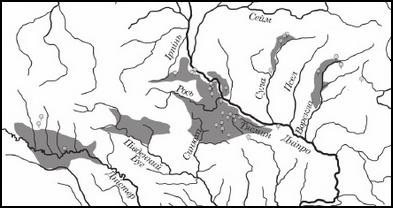
Dissemination of the Scythian culture from western Ukraine into the Left Bank illustrated by the finds of the Scythian swords and daggers of Early- and Middle-Scythian time (see. the map at left).
Left: The map regarding the dissemination of findings of bladed weapons in the Forest-Steppe at Early-Scythian time. (SHELEKHAN' OLEKSANDR. 2016. Fig.1).
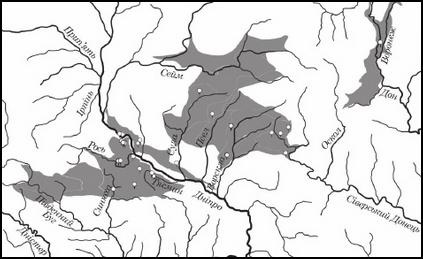
Left: Left: The map regarding the dissemination of findings of bladed weapons in the Forest-Steppe at Middle-Scythian time. (SHELEKHAN' OLEKSANDR. 2016. Fig.2).
Both maps show the gray-filled areas of compact residence of the agricultural population, which correspond to the clusters of place names of Proto-Chuvash origin.
It should not be overlooked that the Scythian cultural heritage must have been preserved to some extent in the cultures of the later population of the Northern Black Sea region and the Northern Caucasus. Assuming the presence of Turkic tribes among the Scythians, I.M. Miziev compared the elements of the material and spiritual culture of the Scythians and the Turkic peoples and came to the following conclusion:
A lot of specific features of the culture of the Scythians were preserved only among the Turkic tribes (horse meat, koumiss, ayran, a bowl on the belt, stone statues, horse burials, felt, etc.) and are considered their ethnographic feature. None of the listed elements is found among the Sarmatian-Alano-Ossetians, who are considered descendants of the Scythians (MIZIEV I.M. 2010-1, 128)
The isolated facts presented in the article in favor of the Western Ukrainian origin of the Scythian culture may seem unconvincing to skeptics, but even their number speaks for itself, especially since every year there are more and more of them. For example, the study of the mound of the early Scythian time in the Kharkiv region made it possible to identify the following facts:
"obvious right-bank "coloring" present in the design of the sanctuary and some of the artifacts found in it",..
"… construction techniques and elements were used in the construction of the surface sanctuary of kurgan 4… quite well known in the underground structures of the Dnieper Forest-Steppe even before the Scythian Persian campaigns" (OKATENKO V.N., SKORY S.A., ZYMOVETS R.V. 2018: 235).
All this suggests that the Scythians could not have been newcomers from Asia. A purposeful search for connections between the archaeological sites of the east and west of Ukraine should provide additional materials.
Scythian cultural influences through the mediation of the Proto-Chuvashes can be found when comparing the Chuvash and Ukrainian folk cultures through their embroidery, music, and so forth. Some Chuvash-Ukrainian cultural matches are shown in the section "Cultural substrate". Something common in the traditional cultures of Ossetians and Ukrainians is absent what has to be expected if the Ossetians were the descendants of the Scythians. If embroidery art is spread very widely at Chuvash and Ukrainians, it has no important place in the folk art of Ossetians, staying behind stone and wood carving, and metal minting. Moreover, completely different symbols typical for pastoral peoples are dominated among elements of Ossetian folk art.
Comparison of the Scythian, Ukrainian, Chuvash and Ossetian traditional folk famale costumes
1. Dress of a Scythian girl from the 4th century. BC was reconstructed by the thing material from excavating the grave Vyshneva Mohyla near the village of Gyunivka in the Zaporozhye Region. Reconstruction of Ya. Prilipko and Yu. Boltik.(BILAN M.S., STELMASHCHUK G.G. 2011: 19).
2. Ukrainian girl from Podolia in folk costume. Watercolor of Yu. Głogowski. 1834(KRVAVYCH D.P., STELMASHCHUK G.G. 1988: 250)
3. A Chuvash girl in national costume. Photo from the site CHUVASH SUIT FROM ANCIENT TO MODERN TIMES
4.Ossetian girl in a wedding dress. Photos from the site "Ossetian wedding and bride's attire".
More on the site "Comparing Folk Dress of Some East European People"


